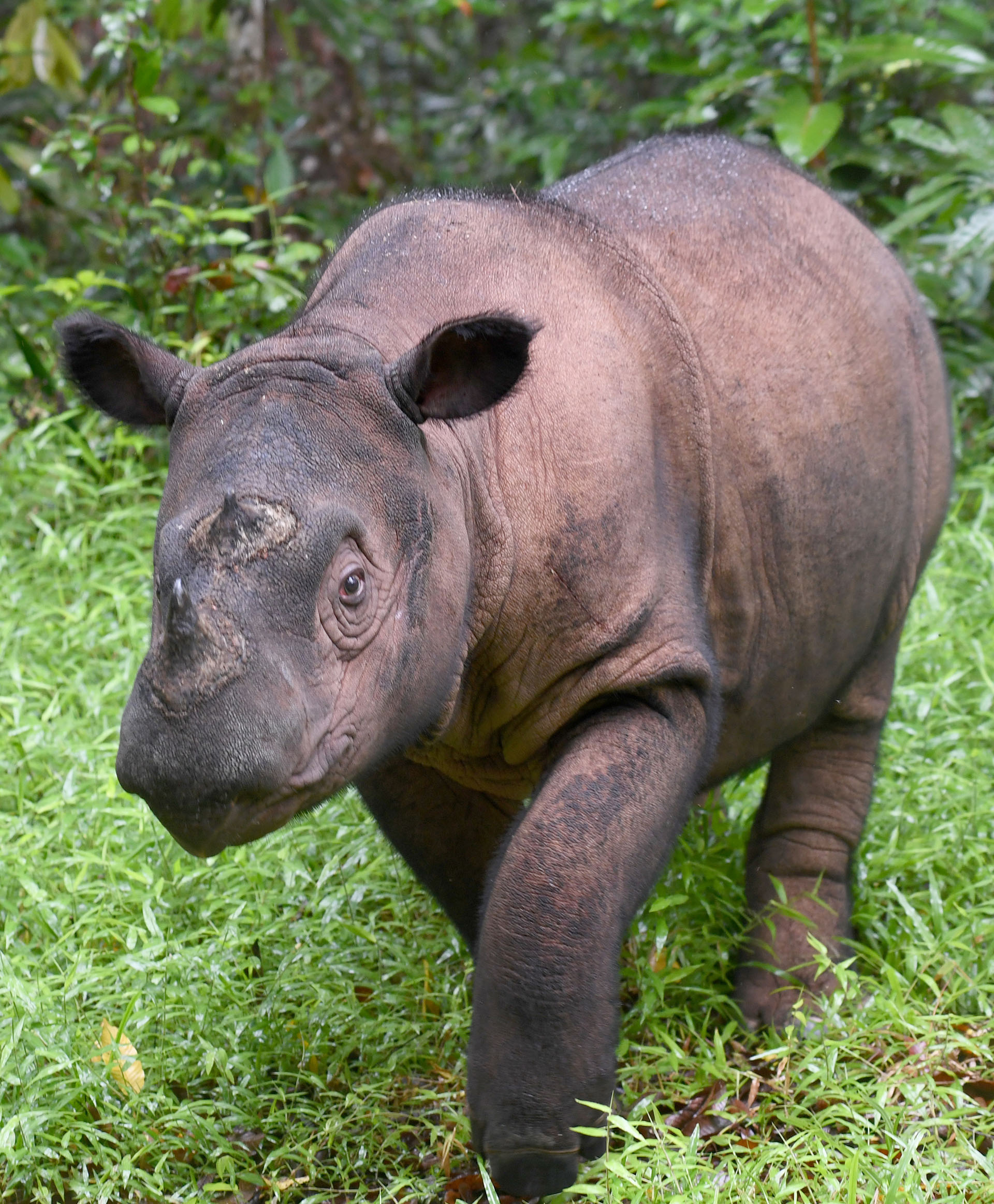The Sumatran rhino has become extinct in Malaysia, after the last of the species in the country succumbed to cancer on Saturday.
The Wildlife Department in eastern Sabah state on Borneo island said the rhino, named Iman, died of natural causes due to shock in her system. She had uterine tumors since her capture in March 2014.
Department director Augustine Tuuga said in a statement that Iman, who reportedly was 25 years old, was suffering significant pain from growing pressure of the tumors to her bladder but that her death came sooner than expected.
It came six months after the death of the country's only male rhino in Sabah. Another female rhino also died in captivity in 2017 in the state. Efforts to breed them have been futile but Sabah authorities have harvested their cells for possible reproduction.

This picture taken on November 8, 2016 shows Andatu, a Sumatran rhino, one of the rarest large mammals on earth, at the Rhino Sanctuary at Way Kambas National Park in eastern Sumatra. /VCG Photo
This picture taken on November 8, 2016 shows Andatu, a Sumatran rhino, one of the rarest large mammals on earth, at the Rhino Sanctuary at Way Kambas National Park in eastern Sumatra. /VCG Photo
"Despite us knowing that this would happen sooner rather than later, we are so very saddened by this news," said Sabah Environment Minister Christina Liew.
Liew said that Iman had escaped death several times over the past few years due to sudden massive blood loss, but that wildlife officials managed to nurse her back to health and obtained her egg cells for a possible collaboration with Indonesia to reproduce the critically endangered species through artificial insemination.
The Sumatra rhino is the smallest of the rhinoceros species and the only rhino with two horns in Asia. The species once roamed across Asia as far as India, but its numbers have shrunk drastically due to deforestation and poaching. The WWF conservation group estimates that there are only about 80 left, mostly living in the wild in Sumatra and Borneo.
(Cover image via VCG, edited by CGTN's Zhao Ying)
(If you want to contribute and have specific expertise, please contact us at nature@cgtn.com.)
Source(s): AP